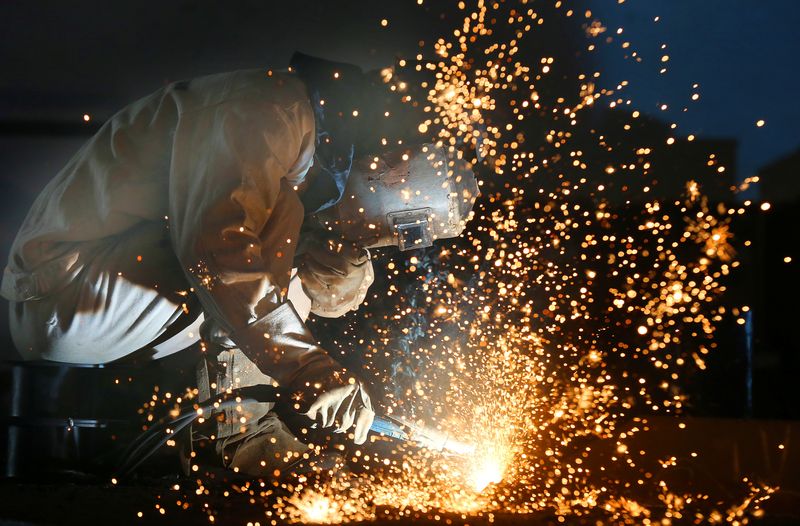By David Kirton
SHENZHEN, China (Reuters) - Christian Gassner, whose furniture components factory in the southern Chinese city of Shenzhen had a dismal end of 2022 amid COVID-19 outbreaks, is finally seeing light at the end of the tunnel.
About two months ago, many workers quit to avoid potential lockdowns ahead of Lunar New Year, then in December, after pandemic controls came off, almost all who remained fell ill, disrupting production.
Having recovered, they are now in home towns with their families for the holiday - and Gassner is looking forward to normality finally returning when they come back to work.
Other owners and managers are similarly eager to get on with what they expect will be a gradual recovery for the Chinese factory sector, which makes almost a third of the world's manufactured goods and is a key growth engine for its second-largest economy.
The government's abrupt abandonment of movement restrictions in December was followed by immense disruption from illness. But people running factories expect that the sudden U-turn will at least deliver a recovery that will be faster than what would have followed a phased withdrawal of controls.
Economically, the country should finally leave behind a pandemic that suppressed domestic demand and snarled global supply chains for three years.
"There is a theory that China was trying to have as many people as possible get COVID in a short time to get it over with," Li, an executive at an auto parts maker with factories in Shanghai and the eastern city of Hefei, said on condition of partial anonymity as he was not authorised to speak to media.
"That's what this feels like."
LIMPING BACK TO NORMAL
Li's factories had to scramble last month, when up to a third of their workers were down with COVID at the same time.
Some of the office staff filled in on assembly lines. Many workers with mild symptoms offered to carry on, asking to defer the week of sick leave they were entitled to for later, in case they needed time to take care of any family members falling ill.
"It was quite stressful," said Li. "Production took a hit."
It was a similar shock for many Chinese manufacturers.
In December, exports were down 9.9% on a year earlier while producer prices fell 0.7%. A manufacturing survey showed the worst contraction in activity since the beginning of the pandemic in February 2020.
Gassner does not think all his workers will return right away after the holiday, which for many Chinese lasts for weeks either side of Lunar New Year's Day - Jan. 22 this year. But he expects his business, which makes motors and actuators for furniture, to gradually rebuild its workforce, and crucially, its clientele.
"Many blue collar guys have parents or grandparents who passed away, or who will be caught in the first big wave in their towns. Life has changed for them," the factory director said. So some will not rush to leave their home towns.
"But if China is open there will be more opportunities. There are customers who I haven't seen for three years, who are now lining up to come."
Forward-looking indicators point to a progressive recovery - not an instantaneous one, and still less one that suddenly takes the country back to a pre-pandemic pace. The manufacturing survey's sub-index of future output surged to the highest since February, but the sub-index for future orders shrank. (Graphic: Exports: a key challenge, https://www.reuters.com/graphics/CHINA-ECONOMY/ACTIVITY/zgpobrrgnvd/chart.png)
China's economic growth slowed to 3% last year, one of the weakest performances in the past half century, and is expected to reach 4.9% this year - still slower than pre-COVID trends.
The country of 1.4 billion, the last major nation to shift to treating COVID as endemic, is reopening to a world of higher inflation and borrowing costs and softening demand, including in major trade partners the United States and Europe.
Ni Hong, who works in the finance department of an electric vehicle component maker in the central city of Chongqing, no longer expects major COVID disruptions, as 85% of the factory's workers have already been infected.
But her company has no plans to add to last year's payroll.
"We are afraid that the upstream companies won't place orders," Ni said.
Her industry peer Li says his factories might even need to cut jobs later this year if external demand weakens.
"If the U.S. economy enters a recession, then it's going to be very damaging to us," he said. "We do rely on U.S. consumers at the end of the day."
